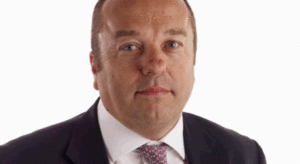Why you should listen to the interview
Sitting in the volatility managed sector, this fund focuses not only on returns, but also on risk and correlation. David uses their disciplined asset-allocation LED framework and explains, in this interview, how he uses this as the cornerstone of the investment process.
This interview was recorded on 29 April 2024. Please note, answers are edited and condensed for clarity. To gain a fuller understanding and clearer context, please listen to the full interview.
Interview highlights
Understanding the LED framework
“We don’t have a benchmark like many multi-asset funds, so we don’t weight versus a benchmark, so we need a framework to help us allocate capital by risk, which we call LED.
“The Strategic Growth fund has an equity risk budget of 66%, as measured by global equity markets. Basically, I have 66% to spend on equity-type more volatile risk assets. This means that any asset class that behaves like equities — whether risk-on or risk-off — has to compete for space in the 66%.
“At the moment, we have about 62% of that 66% in equities because we don’t see so much value in corporate bond markets or emerging market debt markets. So, that’s the E-bucket as we call it; it’s the risk-on, what’s going to generate the inflation +3% return that we’re targeting net of fees for this fund.
“The other two elements act almost as the stabilisers. The L-bucket stands for liquidity assets. For example, cash or sovereign bonds. For many years they did not play a big part in this fund’s portfolio because yields were so low but that’s clearly changed in the last couple of years and today, we have around 25% in sovereign bonds in the fund, whereas we had 0% a few years ago.
“Finally, diversifiers is everything else that doesn’t act like a bond or an equity. At the moment we mostly use structured products in there, or buy put options on the US equity market. We currently own interest rate volatility and we also bought some protection on US treasury bonds recently, like a put option on treasury bonds. The D-bucket is almost like insurance trying to protect the portfolio from the falls in the E-bucket.”
I is for Inflation
“We started the year very much in the camp that we felt the market was far too optimistic about rate cuts in the US. Some market participants were forecasting six interest rate cuts – that would be around 1.5% reduction in rates from the current level 5.25% in the US and there was equal optimism around Europe and UK, but we felt that that was overly optimistic. We did think inflation would trend down, but we didn’t see it getting down to 2% as quickly as maybe the market did.
“When we talked to companies, they were feeling quite positive about the world so there was a bit of a disconnect between what many of the market strategists and economists were saying and what you’re actually hearing from the companies themselves. But generally speaking, all the companies we talk to say we’re moving to normalised markets, supporting that medium-term view that inflation will continue to trend down.
“I do think it’s a case of ‘Be careful what you wish for’. If you were to get six interest rate cuts between now and Christmas, that means we’d be in quite a deep recession and all the central banks would have made an error and earnings would be awful in the equity markets. In a perfect world, you’d want to see interest rates start to come down in Q4, maybe one or two cuts, maybe three or four cuts next year. And if you do get that smoother path for rate cuts, that would mean the economy was still growing, albeit relatively modestly; good for earnings, good for bond markets, inflation comes down. You don’t want the economy too strong because that will keep inflation high, but we don’t want recession either, so we are threading cotton through the eye of a needle a little bit at the moment, but for me we’re pretty much on course. But of course it’s a bit 50/50 the way markets are going and that’s creating this huge volatility at the moment.”
Hedging for a recession
“But as it takes longer for rates to come down, the risk of recession is growing higher. So the probability of recession is now higher probably — in our view — than it was say three or four months ago. Because if the Bank of England’s going to wait to see more evidence of inflation getting more towards 2% before cutting, there’s a potential to keep rates too high for too long, which means recession risk is elevating and we are starting to see some defaults in the corporate bond market.
“We’re already seeing quite a lot of businesses going under in the UK, and certainly seeing bankruptcies in the non-quoted markets. So it’s more about buying more bonds, one, because yields have gone up so they’re even more attractive and two, because they do provide that greater recession hedge. What we’ve been doing in the last week or so is expanding our government bond portfolio. We were principally in US treasuries and UK gilts to start with, and now we’ve broadened into European government bonds. We’ve been buying Romania, Portugal and Germany. And also we’ve been adding to Australia.”
The largest theme in the fund today
“Healthcare is a very long-term bias of ours because everyone will know that we’ve got ageing populations in just about every country in the developed world, along with falling populations in many. This means you have fewer younger workers and more older people that need to be supported.
“Most countries will have the following factors in common: they will have higher health costs coming and more healthcare to give, and that’s expensive. And the way to reduce those costs is to bring in technology and better testing. If you can try and prevent people getting ill, that’s a good thing because you don’t have to treat them or you screen them earlier and secondly, if they are ill, then you want to make operational procedures, scans, get more people through theatres or imaging clinics per day 24 /7 because that’s where we’re going to get waiting lists down and that’s where governments will be able to afford it. So we like the idea of medical technology, preventing illnesses and then also, hopefully reducing the cost of treatment. That feels like a very good long-term trend to be invested in, it’s got a real tailwind there.
“We have seven or eight medical technology companies in the portfolio, from diabetes monitoring like Dexcom, through to heart valves and Edward Life Sciences, to clinical equipment with Thermo Fisher Scientific, to laser treatment on cataracts which is Carl Zeiss.”
Investing in defence is good for GDP
“As for defence, we’ve held Lockheed Martin Corporation for some time — since Trump first went into power — and we’ve added Thales, the French defence contractor, more recently, because Europe is going to have to spend more on defence. Countries do tend to spend on defence within their own country for security reasons, but also because it provides good jobs and high tech jobs in their own country. So, actually when you invest in defence, it’s quite good for your domestic GDP as well.
“Thales is also a leader in cyber security as well, which is increasing in importance as we’ve seen from the Russian/Ukraine conflict: cyber security for stopping jamming systems is really, really important, and Thales leads the way there. We may even add more from the sector, there are other names we quite like, it’s had a bit of a run, so we’ll see how that plays out.
“But again, I think it’s not just a 12-month view, it’s a multi-year change in the way that Europe is going to invest, and I think Europe is now looking at the US as more of an unreliable boyfriend or girlfriend. And I think, whether Trump or Biden succeed in the US elections, I think there will be a lot more spending by European governments in defence.
“Defence is also hi-tech, and with progress in those areas, there’s often a lot of civilian spinoffs as well. It’s an area of technology that people have shied away from probably because the ESG themes a few years ago, but I think sentiment’s changing very quickly.”
Finding diversification in today’s market
“Gold is currently looking quite expensive now relative to dollars and sterling, given the yields that you can get on dollar and sterling bonds. We’ll probably sell gold from here as it’s done its job, so I wouldn’t be adding to it. We continue to buy protection when you get strong market days, when the volatility drops. We were very happy to buy put options to get that protection, but we still own interest rate volatility and we’ve just reduced our position in protection on the US treasury market because yields have risen so we’ve taken a profit on that.
“And then we have some other trades that are non-correlated. One example is linked to the Swiss market where we sell protection to the Swiss corporates because they have to buy a very short-term equity market protection. Because they are forced buyers, the prices are quite high, so we’re happy to sell them that. In turn, we buy protection to cover our market risk slightly longer dated, and we just take the money in between, a kind of arbitrage trade.
“There are a number of opportunities that come and go on a weekly and monthly basis that we take advantage of in the diversifiers bucket, which are effectively just mis-priced risk or where we’re just providing hedging for corporate clients and the big investment banks. I mean, we run £7 billion across the funds now [note: this is across the entire multi-asset strategy range], which allows us to work with all the big investment banks and their corporate customers. Some of them just have to buy hedging for their businesses and that suits our strategy. They’re not taking a different view to the market to us, they just need that hedging and we’re quite happy sometimes to provide that.”
Conclusion
From dissecting geopolitical influences to analysing sectors like defence and MedTech, David provides valuable insights into the thought process behind managing a diversified multi-asset portfolio in today’s market.































